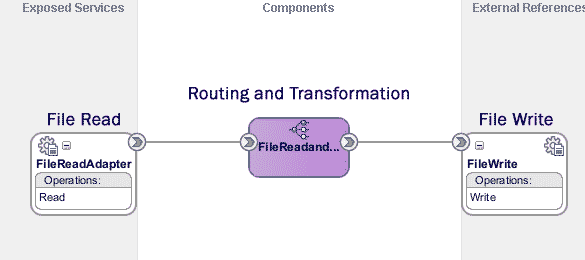Activities are most useful for BPEL Process all activities are drag and drop to BPEL Service Component BPEL process consist of BPEL Assign activity, BPEL Invoke Activity, BPEL Receive activity, BPEL Assign activity , BPEL Switch Activity, BPEL While Activity, BPEL Transform Actvity
BPEL Assign Activity used for to control the data, copy the content one variable to another.
BPEL Transform Activity which is also one type of assign activity which is uses the XSLT to map the elements source format to target format which performances more faster than assign activity. XSLT (Xexntesible Stylesheet Language Transformation) which transform the data one element to another element of other documents.
How to control the process by using switch, while, flow, Flown activities, "Switch Activity" used for implementing conditional branches, "While activity" used for implementing loops, "Flow activity" is used for implementing branches in Parallel, "FlowN activity" is used for run time Parallel branches decides on server side it means dynamic parallel branches.
"BPEL Invoke activity" used for invoke the services, which identify the partner link and specify the operation
"BPEL Receive activity" is used for asynchronous callback response from partner link of service.
BPEL Scope Activity used for manipulating the faults, events, compensation and correlation sets. Scope Activity used for simplifies BPEL process flow.
BPEL Wait Activity used for pause the process for a period of time.
BPEL Empty Activity does not do anything but syntax is required for feature of BPEL Process but which is not perform any activity.
BPEL Assign Activity used for to control the data, copy the content one variable to another.
BPEL Transform Activity which is also one type of assign activity which is uses the XSLT to map the elements source format to target format which performances more faster than assign activity. XSLT (Xexntesible Stylesheet Language Transformation) which transform the data one element to another element of other documents.
How to control the process by using switch, while, flow, Flown activities, "Switch Activity" used for implementing conditional branches, "While activity" used for implementing loops, "Flow activity" is used for implementing branches in Parallel, "FlowN activity" is used for run time Parallel branches decides on server side it means dynamic parallel branches.
"BPEL Invoke activity" used for invoke the services, which identify the partner link and specify the operation
"BPEL Receive activity" is used for asynchronous callback response from partner link of service.
BPEL Scope Activity used for manipulating the faults, events, compensation and correlation sets. Scope Activity used for simplifies BPEL process flow.
BPEL Wait Activity used for pause the process for a period of time.
BPEL Empty Activity does not do anything but syntax is required for feature of BPEL Process but which is not perform any activity.




